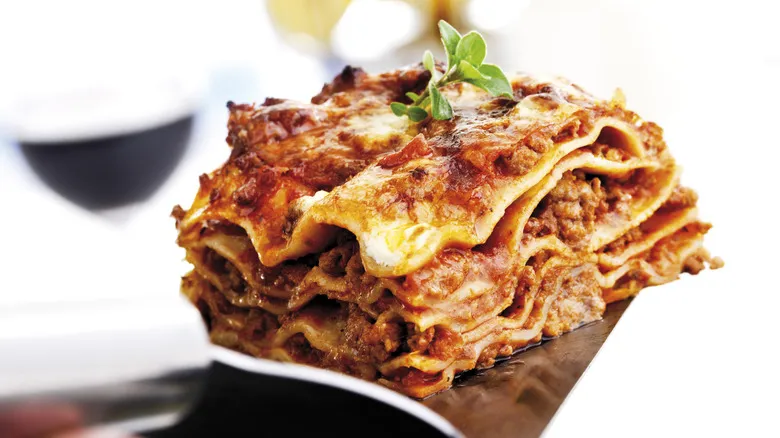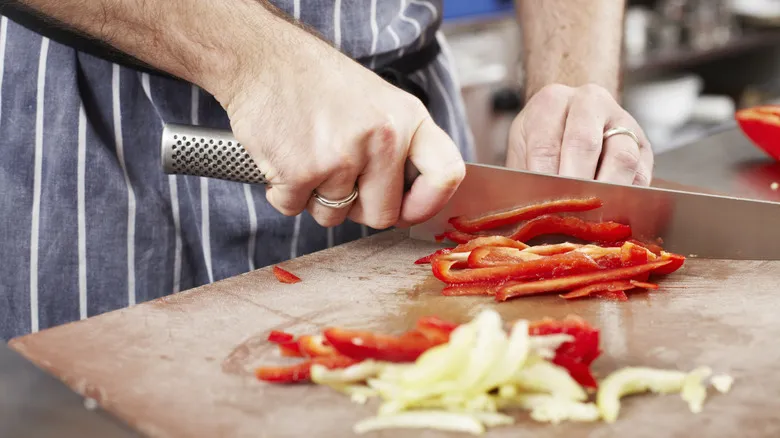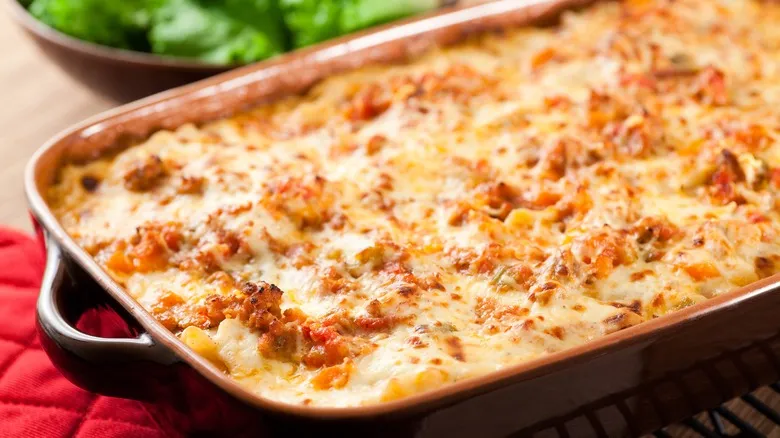Two-part lasagna cooking process

Angie Rito and Scott Tacinelli suggest that covering your lasagna with foil during cooking helps retain heat, ensuring it cooks thoroughly, which typically takes about 45 minutes to an hour. Once it reaches the perfect internal temperature of around 175 degrees, you can move on to the next step.
This phase is crucial for achieving that crispy, bubbly, golden cheese topping that defines an excellent lasagna. After cooking the dish covered with foil, Tacinelli and Rito recommend removing the foil and broiling the cheesy top: "Let it brown for 10 to 15 minutes, until it achieves the desired level of browning and doneness on the top layer." The direct heat from the broiler (the metal coils at the top of your oven) will quickly create a bubbly, browned surface without drying out the interior.
Although lasagna is a relatively simple dish, there are common mistakes that can be avoided. For instance, it's important to heed expert advice to ensure your lasagna maintains its shape. Additionally, don’t hesitate to experiment with ricotta cheese substitutions for an outstanding lasagna. By following these professional tips, you'll be on your way to creating restaurant-quality lasagna in no time.
Recommended

Julienne Vs Baton Knife Cuts: What's The Difference?

The Bread To Use For An Elevated Hot Dog Experience

Coat Your Fish In Potato Chips For A Delectably Flavorful Crust

Popcorn Is Good. Bacon Makes It Better
Next up

